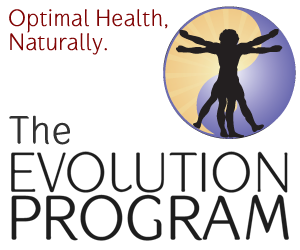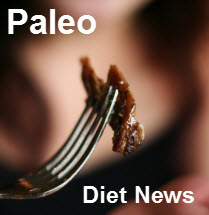Paleo Diet News Review: Perfect Health Diet
The Perfect Health Diet: Four Steps to Renewed Heath, Youthful Vitality, and Long Life, by Drs. Paul and Shou-Ching Jaminet, will serve as a stimulating development to traditional and paleo approaches to eating for many. For those already well-versed in these eating practices, the book explores interesting scientific territory that might otherwise go ignored; most noteworthy is its goal of helping its adherents to achieve “perfect health“.
Shou-Ching Jaminet is a vascular biologist and her husband Paul Jaminet, a physicist and software entrepreneur. The book begins with Paul outlining how a paleo diet helped him overcome several chronic health issues, but ultimately led to his suffering from scurvy (because, he reasons, he went too low in his carbohydrate intake, eschewing even modest quantities of fresh vegetables and fruit).
By experimenting with his diet by supplementing it appropriately, and making a conscious effort to consume more “safe carbs”, he was able to get over this final hump on the journey to real health.
Their programme comprises four steps towards achieving perfect health:
- Step One: Optimize Macronutrition (Eat good-quality proteins and fats and “safe starches”, and avoid poisonous foods such as grains and dangerous fats such as the polyunsaturated variety)
- Step Two: Eat Paleo, Not Toxic (Remove all possible food toxins)
- Step Three: Be Well Nourished (Attend to micronutrition with the right vitamins and minerals)
- Step Four: Heal and Prevent Disease (Combat chronic infections and boost immunity).
The authors base much of what they assert on a review of the available scientific literature, and the conclusions they reach are generally compelling. Their own summary of the book is as follows:
The Perfect Health Diet is a hybrid of the various mammalian diets. With 400 carb calories a day (Omnivore strategy), ketogenic short-chain fats from coconut oil and fiber (Herbivore strategy), and slight under-eating of glucose to force synthesis of a little bit of glucose from protein (Carnivore strategy), the Perfect Health Diet eliminates risk of glucose deprivation while retaining the benefits of low glucose and insulin. Probably 90% to 95% of the population will optimize their health by following the regular Perfect Health Diet.
This may, however, give you an idea of one of the book’s drawbacks - it does become rather technical in places, because it includes long discussions of various scientific studies and their implications for human health. That won’t be a problem for many, but for others, it could become confusing, leading them to ask “but what do I actually eat on this diet?”.
Actually, the Jaminets are clear on that score, outlining in detail exactly which macronutrients should be consumed and in which quantities - it’s just that it takes a bit of wading to find the information and put it together.
In fact, the book would seriously have benefited from the inclusion of the excellent “food plate” diagram that has since appeared on their website:
Hopefully this will be reproduced in future editions.
One of the main focal-points of the book is that malnutrition can occur even in well-fed paleo dieters, and they outline the deficiencies they consider to be almost universally problematic: vitamin D, vitamin K2, selenium, iodine, magnesium, copper, chromium, and vitamin C. Their discussion of these micronutrients is comprehensive and fascinating, although they sometimes stop just short of a really thorough examination of the interplay between micronutrients.
As an example, they recommend against the consumption of fish oils (although they heartily recommend eating oily fish). Their reasoning is based on concerns around vitamin A toxicity and possible rancidity of the oils, but they make no mention of the fact that the jury is still out on just how much a problem this really is, and fail to note that different brands of cod liver oil are likely to offer very different vitamin A and D ratios, as well as being variable in their protection from rancidity.
For a fuller discussion on that particular topic, it’s worth checking out this Weston A Price Foundation article by Chris Masterjohn, The Cod Liver Oil Debate.
Drs. Shou-Ching and Paul Jaminet. Photo courtesy of www.perfecthealthdiet.com
This left me feeling less than convinced by their micronutrient recommendations (although the discussion provided me with food for thought). I also found myself unsure of their “safe starches” recommendations - not because the science seemed bogus in any way (on the contrary, they back their arguments up well) but because the thought of consuming bland and boring white rice simply in order to reach the required carbohydrate level wasn’t particularly appealing.
To be fair, they do offer other alternatives: taro; sago; tapioca; plantains; potatoes; and sweet potatoes.
Overall, though, the book has much to offer. I was particularly interested and impressed by their in-depth discussion of the link between nutrition and immunity, and their analysis of the health issues caused by the infectious diseases we all fall prey to over the course of our lives. They focus on several approaches which can help in this area, including keeping blood glucose and insulin levels low, optimizing essential fatty acid intake, optimizing vitamin D levels, taking iodine supplements, restricting protein, fasting (particularly in order to stimulate ketosis) and getting high-quality rest.
There are other books that would serve as better introductions to the world of the paleo diet; but if a journey beyond conventional paleo wisdom is what you’re after - and you’re turned on by copious scientific references - then this could well be a book that will fascinate and inform you.
If you found this article useful, please click the ‘LIKE’ button below to share on Facebook. We also invite you to leave comments, and join the Paleo Diet News discussion!
Brian Cormack Carr is a professional life and career coach, writer, and advocate of a real foods diet.
His home on the web is www.cormackcarr.com where you will find more articles, a free newsletter, and information about his online career-creation programme www.vitalvocation.com. You can follow Brian on Twitter: @cormackcarr






realy nice graphic! first time I see it.
Thanks!
I find the white rice very appealing. I hated vegetables especially eating them straight with their full flavor. A little white rice buffers the taste when mixed just like with the potatoes. Having the white rice provides alot more variety when you also add in the white rice noodles for italian pasta like meals. Adding safe starches has been key for me staying with a paleo diet this time unlike the several failed attempts at paleo before.
Jaybird, that terrific! You’ve got to do whatever works for you. If including rice does that, then fantastic. It is the safest and least reactive of all of the grains, so, if I were to eat a grain, it would probably be rice. Personally I find it better if I leave out grains completely. But there you are. We are all different and there is no one-size-fits-all approach to achieving and maintaining good health. Thanks for visiting!